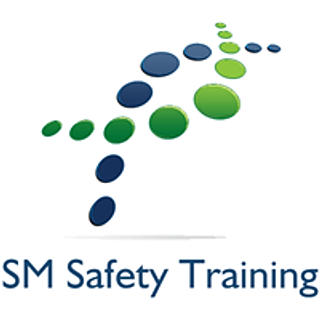Difference Between an Audit and Inspection
- steven mullan
- Oct 30, 2022
- 6 min read
Updated: Apr 25, 2023

Audit And Inspection
Audit and inspection are two important tools that organizations use to ensure compliance with regulations, policies, and procedures. An audit is an independent evaluation of an organization’s financial statements, while an inspection is a review of an organization’s operations and compliance with applicable laws and regulations.
Organizations conduct audits to assess whether their financial statements accurately reflect their financial position and to identify any potential areas of financial risk. Inspections, on the other hand, are conducted to evaluate an organization’s compliance with laws and regulations and to identify any potential areas of non-compliance.
Audits and inspections are important tools for ensuring that organizations are operating in a manner that is compliant with applicable laws and regulations. However, it is important to note that audits and inspections are not substitutes for effective internal controls. Organizations should have strong internal controls in place to prevent and detect violations of laws and regulations. In addition, audits and inspections should be conducted on a regular basis to ensure that organizations are continuing to operate in a compliant manner.
The UK’s Health and Safety Executive publication Managing for health and safety defines health and safety auditing as:
“The structured process of collecting independent information on the efficiency, effectiveness, and reliability of the total health and safety management system and drawing up plans for corrective action.”
A shorter definition is:
Auditing is the systematic, objective, critical evaluation of an organization’s health and safety management system.
Safety audits have three primary objectives:
Ensure the safety program is being followed by the company
Identify weaknesses in the program.
Make sure that proper documentation is maintained.
Health and safety audits share many common features with financial, quality, and environmental management audits; the basic principles are the same.
Auditing is a mechanism for verifying that an organization’s safety management system is in place and operating effectively. It is:
Systematic – the audit follows a series of logical steps and stages and follows a prepared plan.
Objective – all findings are evidence-based.
Critical – it highlights areas of non-compliance or non-conformance.
An inspection is a simpler process of checking the workplace for uncontrolled hazards and addressing any that are found. For example, we might inspect the fire extinguishers in a building to verify that they are where they should be, correctly signed, labelled with an in-date inspection, tagged, and pinned.

Differences Between Audits and Workplace Inspections
We have often heard the words audit and inspection. Since these two words are so often used together, is it safe to assume that they mean the same thing? Do you know if this assumption is correct? Read on to find out how these two types of processes differ from each other.
Their duration and scope are the main differences between safety inspections and safety audits. Inspections usually take place monthly, but audits are more in-depth and more frequent. Safety audits can take several days to complete, while safety inspections might only take five or ten minutes at the start of each shift.
A safety audit could be compared to performing regular maintenance on an automobile engine, whereas a safety inspection is like checking levels of oil and pressure in the tire. A car cannot run without an engine that is functioning however, it is able to be run for a limited period of time on low oil levels or a tire that is deflated. But when the tire deflates, and the engine’s oil levels decrease, and the vehicle gets smaller and more inefficient.
The following are five significant differences between an inspection and an audit.
Audits focus on why, while inspections focus on what
Inspections focus on actions, audits focus on the process
Audits provide qualitative information, and inspections provide quantitative information
Audits are complex, while inspections are simple
Audits result in actions, and inspections create recommendations
A difference of workplace audits and workplace inspections is given in the following table:
Audit | Workplace Inspection |
The purpose of the audit is to assess a company’s health and safety management system. | Assesses the effectiveness of control measures. |
A long process that examines the entire management system. | A relatively short process looking at practices in part of the workplace. |
It is based mainly on the review of documentary evidence and on observations and interviews with all levels of personnel. | Primarily based on observations, perhaps involving very limited scrutiny of paperwork and interview of operators. |
Long, comprehensive report that records areas of concern and weaknesses in the management system. | Short report identifying key corrective actions required. |
Detailed planning required; requires considerable resources. | Only limited planning, and main resource required is the inspectors’ time. |
Typically done annually. | Usually done on a daily, weekly, monthly, or quarterly frequency. |
Aims to improve systems at a high level, with the ultimate effect of improvements cascading down to operating level. Is a strategic tool, addressing long-term progress | Focuses on activities and equipment at operational level, though remedial actions may address system faults. |
Other Differences Between Audit And Inspection
Audits typically focus on an organization’s compliance with standards, and inspections typically focus on an organization’s performance.
Audits are typically much broader in scope than inspections, as they seek to assess an organization’s compliance with standards across all areas of operation.
Audits are typically much more detailed and comprehensive than inspections, as they seek to provide a complete picture of an organization’s compliance with standards.
Audits are typically conducted on a yearly basis, while inspections are usually conducted more frequently, such as every six months or so.
Audits are typically conducted by external parties, such as government agencies or independent auditors, and inspections are typically conducted by internal parties, such as managers or supervisors.
Audits typically utilize a variety of methods, such as interviews, surveys, and document reviews, and inspections typically utilize a single method, such as observation.
Audits typically result in a formal report that is issued to the organization being audited, and inspections typically result in a more informal report that is shared with the relevant managers or supervisors.
Another key difference between audit and inspection is their purpose; while the purpose of an audit is to assess whether an organization is adhering to standards, the purpose of an inspection is to determine whether an organization is performing up to par.
Audits can be quite costly, due to the need to hire external auditors and the comprehensive nature of the assessment, while inspections are typically much less costly, as they are usually conducted by internal parties and are not as comprehensive in scope.
It is important to note that audits and inspections are not mutually exclusive; in fact, it is not uncommon for an organization to undergo both an audit and an inspection at the same time.
At the End of the Audit
Verbal feedback is usually provided at the end of an audit; for some audits, this will involve a presentation to the management team. This verbal feedback will be followed by a written report. The report will make recommendations for improvement and indicate priorities and timescales.
The verbal feedback and report are usually presented to senior management for action and/or praise, as required. This is a demonstration of leadership and, in some cases, it is a requirement in the standards being audited. The management team has the authority and resources to act where required and may also need to adjust the organizational goals and objectives.
After the audit, the feedback and report may contain several findings that require action. These may be classified according to their significance. For example, in the ISO systems, the feedback is prioritized as:
Major non-conformance – a significant issue or breach, which requires urgent action. This could result in the failure of the safety management system and/or result in injury. In ISO terms, a major non-conformance would be grounds for refusing certification.
Minor non-conformance – an issue that is less serious in nature and unlikely to result in injury or a breakdown of the system. In ISO terms, a minor non-conformance would require corrective action, but the certification would be granted.
Observations – an opinion given by the auditor, which the organization could decide to act on.
It is essential that an audit is followed up with action to correct non-conformities. These corrective actions will usually be checked during the next audit. In some auditing systems, this will be done through an interim follow-up visit or audit that simply looks at the way that the previous audit recommendations have been addressed.
At SM Safety Training & Consultancy we can help you understand all health and safety matters, we can guide you through all processes, please feel free to contact us on 01980 731706 or email on info@smsafetytraining.com.





Comments